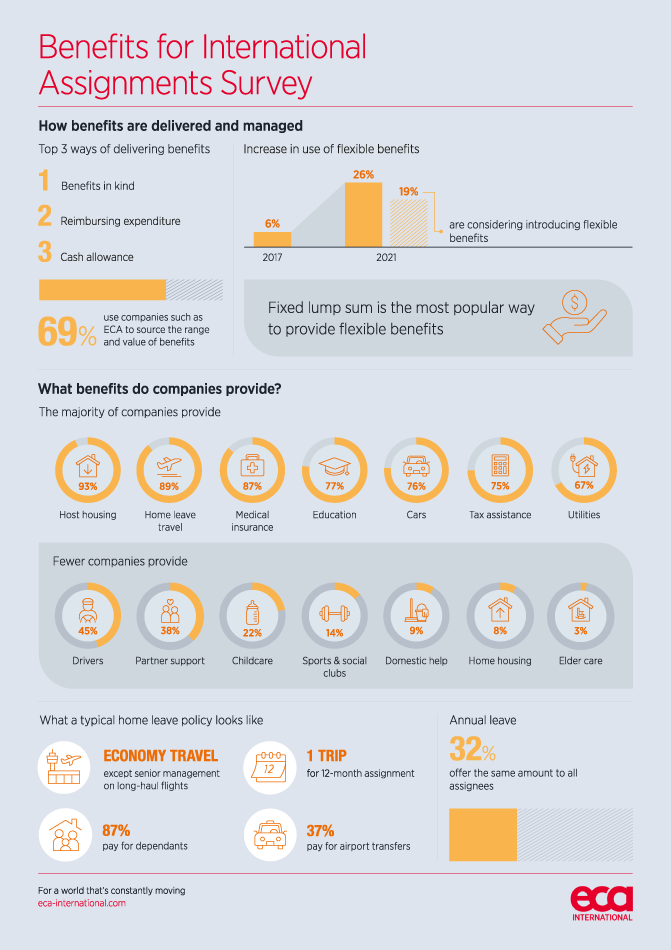Even before the Covid-19 pandemic, the cost of mobility programmes was very much in focus. With benefits often being the costliest part of a long-term international assignment package, many organisations are reviewing their mobility policies to ensure they are cost-effective as well as competitive, and to put themselves in the best possible position as the world reopens and international moves begin to take place again. ECA’s recent Benefits for International Assignments Survey showed that despite cost pressures, benefits remain a key consideration when it comes to sending staff abroad. Some of the key survey highlights are outlined below.

The most common benefit provided to long-term assignees is host country housing, with 93% of companies providing some level of assistance with these costs. Host country housing can be one of the largest components in an assignment package, so it is crucial to get it right. The majority of companies aim to provide free host country housing up to a specified limit, as they look to strike a balance between cost control and assignee happiness. Salary approach does have an effect on housing provision though, with housing assistance much less likely to be provided to assignees on a host-based package.
Home leave travel is another very common assignment benefit, with most organisations also extending the benefit to the assignee’s dependants in order for them to fly home with the assignee. Naturally, in many cases it has been very difficult for home leave trips to actually be taken due to travel restrictions and quarantine requirements, and this has led to greater flexibility from organisations when it comes to unused trips. Only around a quarter of companies allow assignees to carry over or cash out any unused home leave entitlement in normal circumstances, but 50% have done so as a result of the pandemic.
The method of actually delivering long-term assignment benefits is highly dependent on the type of benefit and varies depending on factors such as tax efficiency, ease of administration and the need for flexibility. Providing benefits-in-kind is the most common approach for many of the common benefits provided on assignment, particularly medical insurance and tax assistance. Reimbursement of expenses becomes more common as the assignee needs greater say over the specific details of the benefit provision, such as for education and childcare, and cash allowances are generally the least popular method due to being the least tax efficient and offering the organisation the least control.
Flexible benefit approaches are becoming increasingly popular, most commonly in the form of cash allowances which the assignee can spend on the benefits they choose. Only 6% reported using a flexible approach in 2017, but this has risen to 26% in 2021 with a further 19% considering it for the future. Core and flex and managed lump sums are alternatives used by a minority of those using a flexible approach.
FIND OUT MORE
Balancing the cost of providing a suitable level of benefits against the assignment budget is a complex task. ECA researches detailed and extensive benefits data to produce assignment cost projections, which you can purchase on demand or access through our Assignment Management System, ECAEnterprise, which includes a comprehensive salary and cost estimate calculator as part of its core functionality. Get in touch to request a free personal demo.
Please contact us to speak to a member of our team directly.